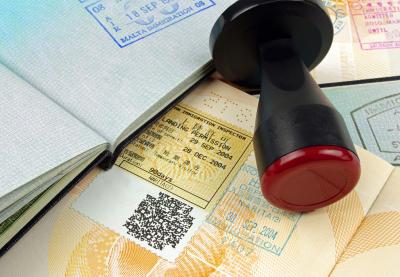Immigration policy isn’t just a hot political topic these days; it’s an issue that personally touches at least a quarter of the students in our nation’s schools. It’s something worthy of class discussion, and teachers should be ready to frame and facilitate that discussion.
Since members of Congress and the president are actively discussing ways to address some of the most pressing issues—including the future of DACA recipients, which immigrants we should welcome and what constitutes good border security—the topic might well come up in class.
No, I will not address whether a word that roughly translates into "outhouse" was actually said by the president of the United States, should have been said or accurately describes any nation. Neither should any teacher.
But I encourage teachers to talk about what Lyndon Johnson called a “deep and painful flaw in the fabric of American justice” when he signed 1965’s Immigration and Nationality Act.
He was recalling this nation’s longstanding preference in immigration policy for white Europeans. The 1965 law abolished a system of quotas established 45 years earlier that had favored immigrants from countries like England, Scotland and Norway, and made it nearly impossible for people from Latin America, the Caribbean or Africa to enter. The quota system was simply the latest in a line of policies that, at one time or another, excluded people of color from qualifying for U.S. citizenship—and people from specific nations, like China, from even entering the country.
In other words, the United States made a habit of declaring that some countries—and their people—were better than others. In signing the immigration bill, Johnson enunciated what would become a more open and inclusive immigration policy:
This bill says simply that from this day forth those wishing to immigrate to America shall be admitted on the basis of their skills and their close relationship to those already here.
This is a simple test, and it is a fair test. Those who can contribute most to this country—to its growth, to its strength, to its spirit—will be the first that are admitted to this land.
Yesterday’s comments should remind us that we’ve been in this place of exclusion before, and we decided, as a nation, to leave it behind. We decided to be better.
Students should strive to answer today’s pressing questions: Who will we welcome into this country, and what does it take to become an American? According to a statement from the White House, it should be people from places like Norway, people who are well educated and “can contribute to our society” and “assimilate into our great nation.”
The argument that certain people “can’t assimilate” has been used to block all sorts of people in the past: The list includes European Jews and people from Ireland, Italy, Greece, China and Japan, to name just a few. But history has shown that they all become Americans by virtue of embracing American ideals and upholding American institutions. That’s what assimilation means.
I spoke today to an old friend and former colleague who has an adopted son from Haiti. He told me that the process took two years, during which he made several trips to the country and developed many friendships with other families who were also adopting. He talked about those children, describing them as “incredibly hardworking, respectful, intelligent and talented.” He told me the president’s words stung, and I asked how his son felt. He said he didn’t think he knew about it yet.
“He’s too busy with sports and preparing for the SATs this weekend,” he told me, “but we will talk about it.”
And so should we all.
Costello is the director of Teaching Tolerance.
